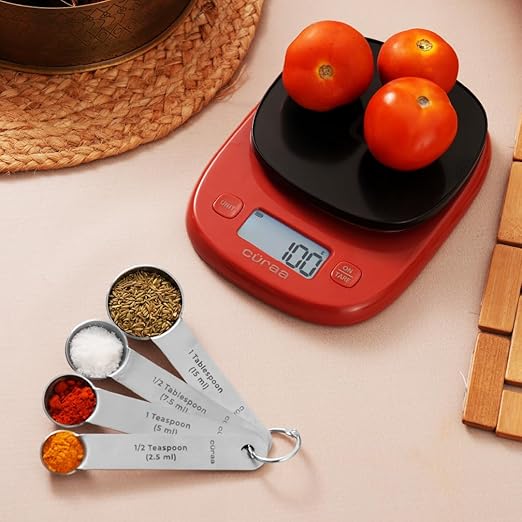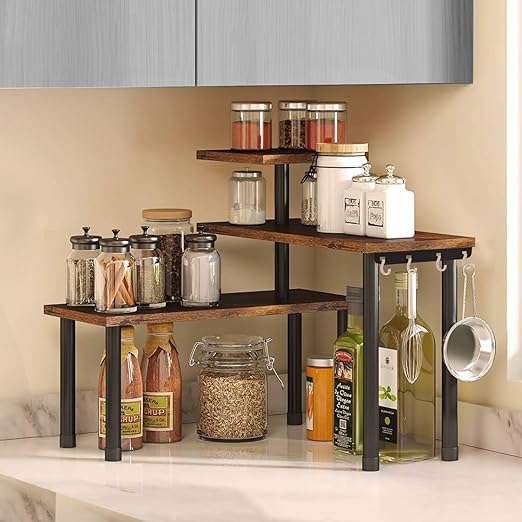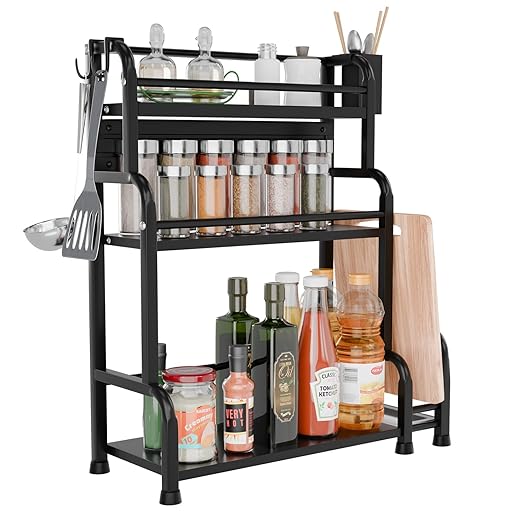Preparing for a boiler interview can be challenging as it covers a wide range of technical topics like boiler operation, maintenance, safety, and performance. To help engineers and operators, we have compiled the most important boiler interview questions and answers that focus on practical knowledge, troubleshooting, and industry standards. This guide will not only boost your confidence but also give you a clear understanding of key boiler concepts frequently asked in interviews.
Following are some selected Boiler interview Questions and Answers asked in Boiler exam or Job interviews.
These questions and answers are useful for both engineers and Boiler operators
1-What is a boiler?
A boiler is a closed vessel in which water is converted into steam by the application of heat. The steam is used for power generation, heating, or industrial processes.
2-What are the main types of boilers?
A-Based on Type of Orientation
Fire Tube Boilers and Water Tube Boilers
B-Based on Firing Method
Externally Fired Boilers and Internally Fired Boilers

Cüraa by YFL Home Weight Machine for Kitchen with Measuring Spoons
C-Based on Fuel Used
Solid Fuel Boilers – coal, bagasse, wood, biomass.
Gas Fired Boilers – natural gas, LPG, syngas.
Waste Heat Boilers – use heat from exhaust gases of turbines, furnaces, or engines.
Liquid Fuel Boilers – diesel, furnace oil, heavy oil.
Nuclear Boilers – use nuclear fission as heat source.
D-Based on Pressure Range
Low-Pressure Boilers
Medium-Pressure Boilers
High-Pressure Boilers
Supercritical-Pressure Boilers
E- Based on Circulation of Water/Steam
Natural Circulation Boilers
Forced Circulation Boilers
F-Based on Axis of the Shell
Horizontal and Vertical Boilers
G-Based on fluidisation
AFBC, CFBC and Pulverised fuel Boilers
3-What are common boiler mountings?
Safety valve, water level gauge, pressure gauge, blowdown valve, fusible plug, feed check valve, stop valve.
4-What is the function of Boiler Accessories?

To improve the Boiler efficiency.
5-What are the functions of Boiler Auxiliaries?
Auxiliaries are supporting equipment required foroperation, maintenance & safe workingof the boiler.
6-Differentiate between Boiler Accessories and Axillaries?
What are the differences among Boiler Mountings, Auxiliaries and Accessories?
| Sl No. | Boiler Auxiliaries | Boiler Accessories |
| 1 | Boiler Auxiliaries are the Supporting equipment that helps in the smooth operation of the boiler system | These are the Devices attached to the boiler to improve efficiency and performance. |
| 2 | The purpose of the Boiler Auxiliaries is Fuel handling, draft creation, ash disposal, and pollution control. | The purpose of the Boiler Accessories is for Fuel economy, better steam quality, efficient heat utilization. |
| 3 | These are not compulsory/mandatory as per Boiler rules | These are not compulsory/mandatory as per Boiler rules |
| 4 | Without Boiler Auxiliaries boiler operation difficult | Without accessories Boiler can be run but not efficiently leading to lower efficiency and more fuel consumption |
| 5 | Not related directly in steam generation | Directly related in steam generation |
| 6 | These enable boiler in smooth, continuous operation. | Boiler Accessories Reduces fuel cost, improves steam quality |
| 7 | ID fans, FD fans, PA fans, SA fans, fuel feeding, fuel handling, ash handling system, chimney etc | Economizer, superheater, air preheater etc |
7-What do you mean by steam to fuel ratio (SFR)?
SFR is the amount of steam generated on combustion of 1 kg of fuel. High GCV fuels have higher SFR and Vice versa.
8-What is meant by Excess air?
It is the air supplied for complete combustion of the fuel
9-What is meant by specific fuel (SFC) consumption?
SFC is the amount of fuel consumed to generate one unit of power by a power plant
10-What is meant by Specific Fuel consumption (SSC)?
It is the amount of steam consumed to generate 1 MW of electrical power.
11-What is meant by combustion?
Its oxidation of the fuel into heat, where chemical energy present in fuel is converted into heat energy.
12-What do you mean by Interlocks & What are the interlocks provided for Boilers?
An interlock is a safety or control mechanism that prevents equipment from operating under unsafe or undesirable conditions.
Boiler will trip upon acting following interlocks.
- High drum level
- Low drum level
- ID fans trip
- Fuel feeding trip
- High main steam pressure
13-What is meant by draft?
Draft is the difference between atmospheric pressure and the pressure inside the boiler furnace or chimney, which ensures the continuous supply of air for combustion and removal of flue gases.
14-What are the different types of drafts used in Boiler?
Natural draft, forced draft, induced draft and Balance draft. Boiler adopt balanced draft?
15-What actions will you take if Boiler ID fans trip and FD fans and other series fans are running?
Should stop all the fans or should trip the Boiler immediately.
16-What will happen if FD fans do not trip upon tripping the ID fans?
Boiler draft increases and may lead to the furnace explosions.
16-What action you will take if Boiler feed pumps trip?
If all the Boiler feed pumps trip simultaneously, then one should trip the Boiler immediately and should close MSSV.
After doing the above activity then should go for troubleshooting of Boiler feed pumps
17-What are the reasons for main steam temperature shoot up or sudden rise in Boiler?
Following are the potential reasons;
- Failure of attemperator control valves
- Boiler over load operation
- Poor operation skills
- High GCV fuel
- More excess air
- More fuel in furnace
18-What are the reasons for low main steam temperature in Boiler?
Following are the potential reasons;
- Failure of attemperator control valves
- Boiler under load operation
- Poor operation skills
- Lower GCV fuel
- Lesser excess air
- Residence of flue gas in furnace is less
- Lesser fuel in furnace
- Poor heat transfers due to ash accumulation on heating surfaces
19-What are the reasons for high furnace draft?
High furnace draft is due to;
- More excess air
- Improper fuel and air mixture
- Air pre-heater tubes have chocked
- Lesser capacity of ID fans
- Ash accumulation in flue gas path
- ID fans suction & discharge dampers partially closed
- Malfunction of draft controllers
- Human error due to poor operation skills
20-What are the reasons for low main steam pressure in Boilers?
Potential reasons for low main steam pressure in Boilers are;
- Low fuel input in furnace
- High or Low excess air
- Fuel feeders chocked
- No fuel level in bunker/silo
- Poor heat transfer
- Combustion control loop failure
- Poor quality of fuel
- Human error
21-What will happen if drum safety valves pop up before Steam line safety valve?
If drum safety valves pop up before Steam line safety valve, then starvation in super heater coils may occur leading into failure of super heater coils.
22-What is the main function of start-up vent CV?
Start up vent is used to ensure minimum steam flow from super heater coils during start ups or low load operation of the plant.
23-What is the relation between % of carbon and excess air?
As the % of carbon in fuel increases, air required for combustion increases and vice versa.
24-What is the relation between % of oxygen and excess air?
As the % of oxygen in fuel increases, air required for combustion decreases and vice versa.
25-What is the significance of Volatile matter (VM) in fuel?
Methane mainly consists of It mainly consists of hydrocarbons, hydrogen, carbon monoxide, methane, tar vapors, etc
Higher volatile matter makes the fuel ignite quickly because gases are easier to burn than solid carbon.
Fuels rich in VM produce long, luminous, stable flames, which helps in maintaining continuous combustion in boilers and furnaces.
VM releases combustible gases early in the furnace, providing rapid heat release.
High-VM fuels require larger combustion volume (to allow time for volatiles to burn completely).
VM contributes to the heating value of the fuel, though fixed carbon is the major contributor in solid fuels.
26-What are the Proximate and Ultimate analysis of the fuel?
IN proximate analysis Ash, moisture, fixed carbon, VM present in the fuel are analysed and in Ultimate analysis, % of carbon, % of oxygen, % of sulphur, nitrogen and hydrogen are analysed.
27-What are the recommended major parameters of feed and Boiler water for high pressure Boilers?
| Sl No. | Parameter | UOM | Feed water | Boiler water |
| 1 | pH | Unitless | 8.5 to 9.2 | 9 to 10 |
| 2 | Conductivity | MicS/cm | 5 to 10 | 50 to 150 |
| 3 | Hardness | ppm | Nil | Nil |
| 4 | Silica | ppm | 0.02 | <1.5 |

28-What is the % of O2 maintained in flue gas?
% of O2 maintained in flue gas: 4 to 5%
29-What is the ash content in Bagasse?
Its 1 5 to 2%
30-What is meant by HMBD?

HMBD is Heat Mass Balance Diagram
31-What is the MCR?
It is the maximum Continuous Loading of the Boiler
32-What is Boiler peak load?
It is 10% extra load on Boiler, this maintained once in a shift for maximum 30 minutes
33-What are the inlet and outlet dust contents of ESP?
Inlet dust: 5 to 30 g/NM3
Outlet dust: 30 to 150 mg/Nm3
34-What is the CO2 content in flue gas after Boiler outlet?
CO2 = 12 to 15%
35-What is the Moisture content in flue gas of coal fired Boilers?
It is round 10 to 15%
35-What is the major losses in Bagasse and slop fired Boilers?
Heat loss due to moisture in the fuel
36-What is the major losses in coal fired Boilers?
Heat loss due to dry flue gas loss
37-What immediate actions will you take upon leakage of Boiler tubes?
Following sequential actions should be taken;
- Inform senior team members, obtain the permission for Boiler shut down
- Initiate Boiler shut down
- Start forced cooling of the Boiler
- Stop cooling, once the metal temperature comes below 100 deg C
- Inspect and carryout welding activities.
38-What are the reasons for Boiler back fire?

Reasons for Boiler back fire;
- High moisture content in the fuel
- More excess air
- APH tubes chocked
- Sudden closure of ID fans damper
- Combustion controller failure
- More fuel feeding or improper air fuel mixture
- Human errors
39-What actions will you take if Boiler water silica level increases?
Increasing CBD & if required giving IBD
40-What will happen if bottom headers drain valves opened during high steam rate?
If done so, Boiler circulations gets disturbed and may lead to Water wall tube failure
41-What are the reasons for more fuel consumption in Boiler?
Potential reasons are;
- Low GCV fuel
- High moisture content in fuel
- Boiler outlet flue gas temperature is more
- More unburnt in ash
- More excess air than required
- Low feed water temperature at economiser inlet
42-What are the maintenance activities carried out during Boiler annual shutdown?
Following maintenance activities are carried out;
- Boiler ash cleaning
- Boiler pressure parts cleaning and inspection
- All valves overhauling
- Travelling grate overhauling/ Bed plate, fuel nozzle inspection and replacement if damaged.
- Fuel nozzles inspection and replacement if damaged.
- APH tubes cleaning and brushing
- Steam lines and water line gasket inspection and replacement
- Soot blowers overhauling
- Flue gas and air ducts cleaning and inspection
- Pressure parts thickness mapping
- Boiler Hydraulic test
- Refractory and insulation work
- Preparation for Boiler start up
43-What is the Blow down in safety valves?
Blow down = (Set pressure- Reseat pressure) X 100 / Set pressure
Normally blow down is in the range of 3 to 5%
44-What will happen if Blow down of safety valve is more?
Higher blow down of safety valves causes disturbances in Boiler operation like;
High or Low drum levels
Loss of steam and water
Failure of super heaters if Drum safety valve’s blow down is more
45-What is the MOC of Boiler pressure parts?
- Water wall tubes: SA 210 Gr.A.B or C
- Economiser coils: SA 210 Gr.B
- Steam drum: SA 516 Gr.70
- Convection super heaters: SA 335 T11
- Radiant Super heaters: SA 335 T11 or T91
- Main steam header: SA 335 P22/P91
- Water wall headers: SA 106 Gr.B
- Feed water line: SA 106 Gr.B
46-What are the emergency situations expected in Boiler operation?
Emergency in Boiler Operation;
- Boiler tubes leakage
- Tubes puncture
- Tubes burst
- Main steam line leakage
- Steam or water line gasket leakage
- Furnace explosion due to high draft
- Sudden load cut off on Boiler
- Load fluctuation in Boilers
47-At what loads Boiler steam temperature can be controlled?
Boiler steam temperature can be controlled at 60 to 100% of Boiler load
48-In a Boiler a coal of GCV 4000 kcal/kg and Biomass of GCV 2800 kcal/kg have been used in the ratio of 40: 60 by heat, then calculate the quantity of coal and biomass consumed.
Heat value of coal = 4000 kcal/kg
Heat value of biomass = 2800 kcal/kg
Total heat value = 4000 + 2800 = 6800 kcal/kg
Quantity of coal consumed = 6800 X 40%/4000 = 0.68 MT
Quantity of Biomass consumed = 6800 X 60%/2800 = 0.68 MT = 1.46 MT
49-What are the contribution of each heating surface in generating the steam in slop & coal fired AFBC Boilers?
Water wall tubes: 25%
Economiser: 30%
Evaporators: 35%
Super heater coils:10%
50-What are the chemicals used in Boiler internal treatment?
HP dosing: Tri Sodium Phosphate
LP dosing: Oxygen Scavenger like Hydrazine, Diethyl hydroxylamine
51-What are the chemicals used for Regeneration in DM plant?
Regeneration of strong acid cat ion- HCL or H2SO4
Regeneration of Strong Base An Ion: Sodium Hydroxide (NaOH)
Mixed bed: HCL or H2SO4 and Sodium Hydroxide (NaOH)
52-What are the start permissive for Boiler feed pumps?
- Start permissive for Boiler feed pumps
- Deaerator level -Normal
- Bearing temperature normal
- Bearing vibration normal
- Suction pressure normal
- Suction valve open
- Discharge valve close
53- What is NPSH? Why is it important in BFP?
NPSH (Net Positive Suction Head) is the difference between suction pressure head and vapor pressure head of water. Important because BFP handles high-temperature feedwater close to saturation; inadequate NPSH can cause cavitation, damaging impellers.
54-What are common causes of cavitation in Boiler Feed Pumps?
Reasons for cavitation in BFP
- Low suction pressure (due to poor deaerator level or vacuum loss).
- High water temperature (reducing NPSH available).
- Excessive suction lift.
- Blocked suction strainers.
55- What are the main functions of the steam drum?
Functions of Boiler steam drum
- Stores water and steam mixture.
- Separates water droplets from steam using separators/driers.
- Maintains water level for safe boiler operation.
- Provides feedwater distribution to boiler tubes.
- Supplies saturated steam to the superheater.
56- What are the main internals of a steam drum?
- Cyclone separators / primary separators – remove bulk water.
- Chevron separators / secondary separators – remove fine droplets.
- Scrubbers / demisters – final polishing of steam.
- Feedwater distribution pipe.
- Chemical dosing pipe.
57-What is carryover in a steam drum?
Carryover is the entrainment of boiler water droplets with steam. It can lead toturbine blade damage, deposits, and boiler efficiency reduction.
58-What is swelling and shrinking in steam drum?
Swelling: Apparent rise in drum water level due to bubble formation when steam demand increases.
Shrinking: Apparent fall in drum water level due to bubble collapse when steam demand decreases.
59-What is the refractory period and temperature for AFBC and travelling grate Boilers?
Refractory period and temperature for AFBC Boilers: 36 to 48 hours at temperature around 350 deg C peak.
Refractory period and temperature for Travelling grate Boilers: 24 to 36 hours at temperature around 150 deg C peak.
60-What are the types of Super heaters?
- Radiant Superheater – Placed in the furnace, absorbs heat mainly by radiation.
- Convection Superheater – Located in flue gas path, absorbs heat by convection.
- Combined (Radiant + Convection) Superheater – Uses both methods for efficiency.
- Pendant, horizontal, platen type coils depending on arrangement.

61-What are common problems faced in Superheater coils?
- Overheating due to low steam flow or flame impingement
- Creep damage at high temperature
- Corrosion & oxidation due to flue gases (especially with high sulphur fuels)
- Erosion due to fly ash
- Tube leakage causing boiler trip


